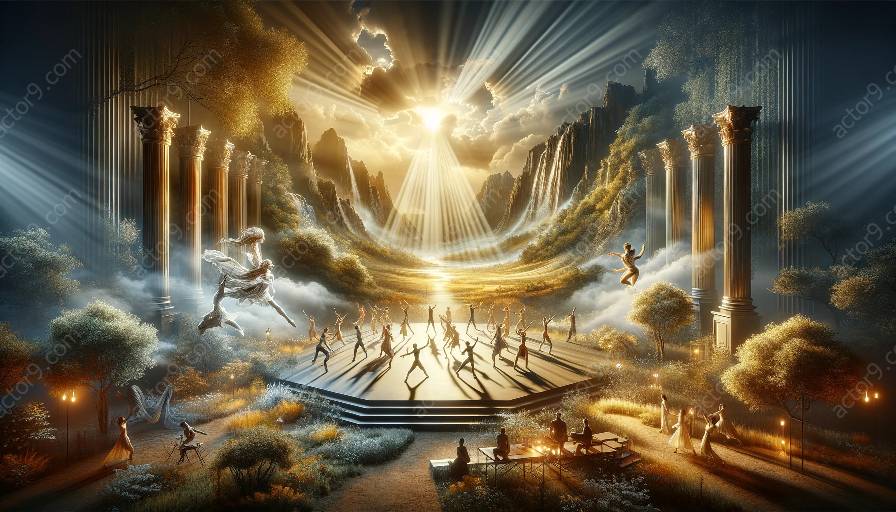Physical theatre is a form of performance that emphasizes physical movement, expression, and storytelling without relying on traditional spoken dialogue. Given the unique nature of physical theatre, lighting plays a crucial role in enhancing the dynamics, emotions, and narratives conveyed on stage.
The Role of Lighting in Physical Theatre
Luminosity has the power to influence the mood and atmosphere of a physical theatre production, constructing a visual landscape that complements the narrative. It can shape the perception of space and time, accentuate movements, and highlight the nuances and emotions portrayed by the performers. By employing specific lighting techniques, physical theatre productions can elicit powerful responses from the audience, guiding their focus and evoking an immersive experience.
Lighting also assists in transforming the performance space, bringing magic and realism to life. It allows physical theatre productions to convey abstract concepts and transcend the limitations of conventional storytelling, immersing the audience in a world of imagination and transformation.
Practical and Technical Challenges in Executing Complex Lighting Designs for Physical Theatre Productions
Executing complex lighting designs for physical theatre productions presents a myriad of practical and technical challenges. Such challenges encompass but aren't limited to:
- Integration of Lighting with Physical Movement: In physical theatre, lighting must seamlessly integrate with the performers' movements. Designing lighting that flows harmoniously with the dynamic choreography and physical expressions while maintaining visual impact is a complex task.
- Adaptability to Non-Traditional Spaces: Physical theatre productions often unfold in non-traditional performance spaces that may lack advanced technical infrastructure. Overcoming the limitations of such spaces to achieve intricate lighting effects demands innovation and resourcefulness.
- Collaboration with Performers and Directors: A successful lighting design requires close collaboration with performers and directors to understand their artistic vision and translate it into illuminative elements that enhance the storytelling and emotional nuances of the performance.
- Complex Cueing and Timing: Coordinating intricate lighting cues with the nuanced physical movements and expressions of the performers demands precise timing and synchronization. Technical dexterity is essential to execute complex lighting sequences seamlessly.
- Power Management and Safety: Managing power requirements and ensuring the safety of elaborate lighting setups in physical theatre productions necessitates careful planning and adherence to stringent safety protocols. The integration of various lighting elements while maintaining technical reliability poses significant challenges.
Addressing these challenges requires a deep understanding of the intricacies of physical theatre, technical expertise in lighting design, and a collaborative approach that fosters creativity and innovation.
Ultimately, the successful execution of complex lighting designs in physical theatre productions enhances the storytelling, emotions, and visual spectacle, contributing to a captivating and immersive experience for the audience.




































